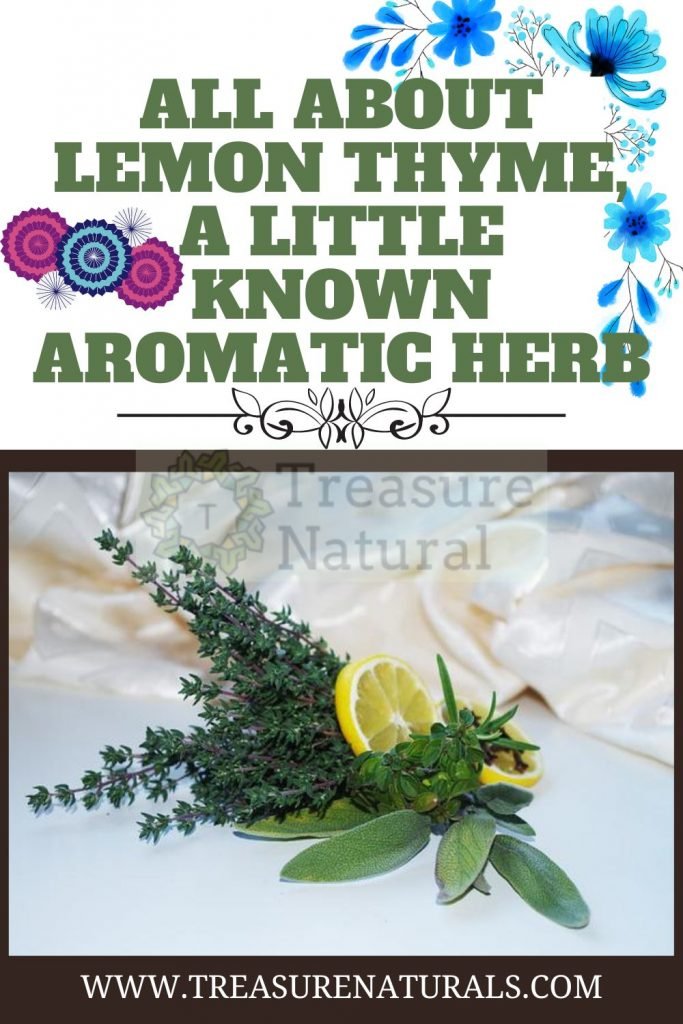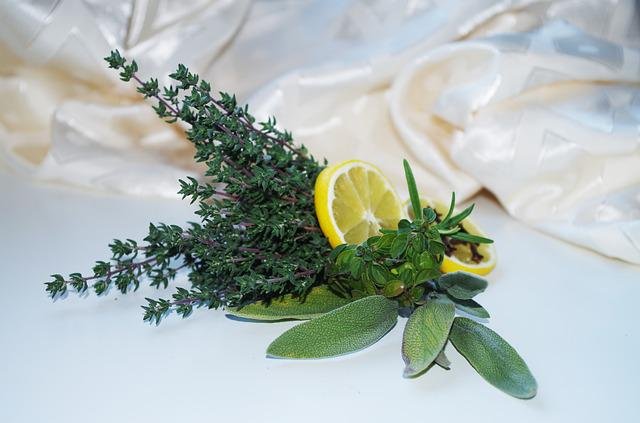
Today we are talking about lemon thyme, a little known aromatic herb, but it holds great surprises in the kitchen, as it enriches many preparations with taste and aroma, from meat to fish.
Let’s go and discover it together.
Lemon thyme: what it is
Lemon thyme is an aromatic plant that is part of the thyme family. Its scientific name is Thymus citriodorus and it is a perennial plant whose peculiar characteristic is the intense aroma of lemon, which is perceived both as a scent and as a taste.
Characteristics of the plant
It comes in the form of compact ball-shaped tufts, green and golden yellow in color. The numerous branches tend to lignify quickly, while the small, gray-green leaves give off an intense lemon scent when rubbed.
Flowering occurs in spring, when the shrub produces delicate flowers ranging from white to very soft pink.
Habitat
Typical of the Mediterranean areas, it grows in arid, poor and stony environments.
Cultivation of lemon thyme
Lemon thyme is easy to grow; it is in fact a rather strong and robust plant. Let’s see what are the various parameters to keep in mind to promote good growth.
- Land: has no particular needs in this sense; the important thing is that the soil is dry and well drained because it suffers from water stagnation.
- Exposure: it loves very sunny areas, but is also able to tolerate partial shade. It tolerates wind well since it grows in an almost creeping position and therefore is hardly disturbed by air currents.
- Irrigation: not abundant and to be carried out only when the soil is completely dry.
Lemon thyme in winter
Like most aromatic plants, lemon thyme also grows in the open field and does not require special precautions. It can survive severe frosts; however, in periods in which temperatures drop by several degrees below zero, it is necessary to guarantee suitable protection from the cold, especially in the case of severe frosts. This protection can consist of:
- a sheet of non-woven fabric, cellophane or nylon, open at the top to avoid condensation
- a layer of straw or mulch with pine bark placed on the soil surface
- on the balcony or terrace, it may be sufficient to bring the plant closer to the walls of the house
Lemon thyme: multiplication by cuttings
It should be done in late spring or in August. The cuttings must be at least 7-10 cm long and taken from plants in good health and aged between 2 and 4 four years.
Some advice
- Once planted, keep the soil moist until the plants are well rooted.
- If you have opted for sowing in pots, irrigation should be done when the soil is dry.
- To improve drainage and prevent water stagnation, mulch with limestone gravel or sand.
Diseases
The most insidious enemies of lemon thyme are spider mites that could irreparably damage the plant.
Lemon thyme flowers
It blooms from spring and all summer. The flowers of lemon thyme are very rich in nectar and therefore highly sought after by bees.
Lemon thyme: harvest
The parts of the lemon thyme that are harvested are the leaves. Harvesting must take place throughout the vegetative period. Used in the kitchen or as a health remedy, they can be used both fresh and dried.
Dry lemon thyme
Its leaves can be eaten fresh or dried and stored in glass jars.
The drying method is similar to that generally used for aromatic herbs.
Drying can be done:
- in a natural way, hanging the twigs in dry, shady and airy places
- with a dryer
Dried lemon thyme leaves should be stored in airtight glass jars and away from light.
Unlike other aromatic herbs, once dried lemon thyme does not lose its olfactory characteristics, on the contrary, it enhances them.
Properties of lemon thyme
Belonging to the thyme family, lemon thyme possesses the same multiple therapeutic properties.
The lemon thyme is also rich in vitamins and mineral salts such as vitamin C and those of group B, and substances such as thymol and linseed which insert it among the medicinal plants.
This type of thyme, in addition to having known aromatic properties, has important healing properties.
It is often used in case of:
- respiratory tract diseases (cough and cold)
- digestive problems and flatulence
It also has antiseptic properties and regulates sebaceous production (in shampoos and skin products).
In the Renaissance, cooked with wine, it was used as a remedy to combat asthma and urinary tract infections.
Use lemon thyme
Its particular flavor, a balanced mix between classic thyme and the fresh citrus fragrance of lemon, make it a widely used ingredient in the kitchen, especially in combination with many meat and fish dishes.
In the kitchen
With its intense citrus taste, lemon thyme is used in cooking, both in Europe and in Eastern countries. The combinations to which it lends itself are so many. Here are some of them:
- season for grilled or baked fish
- flavoring salads (the vegetables it goes best with are sprouts, tomatoes, yellow peppers and aubergines)
- season grilled or boiled meats
- enrich the sauces to season first courses
- season legumes: in addition to giving a citrus note similar to lemon to the preparation, it also makes it more digestible by avoiding the formation of air in the belly
- make grilled or steamed vegetables tastier
- season the baked potatoes
- give a fresh touch to sautéed mushrooms
- give a citrus touch to sauces and accompanying creams for several seconds
But it can also be used for desserts:
- preserve fruit in alcohol
- give a particular taste to sorbets and ice creams
Herbal tea or aromatic drink
It is also often used for the preparation of herbal teas, to be sipped both hot and cold. The preparation is by infusion, alone or with other herbs.
Recipes
Let’s see a couple of recipes that require the use of this aromatic herb.
Zucchini au gratin with lemon thyme
The process is really very simple. Just cut the courgettes in half in both directions, sprinkle them with breadcrumbs, sprinkle with a drizzle of oil and sprinkle with salt, sage and dried lemon thyme. Bake in the oven until soft and golden.
Lemon thyme sorbet
Boil 250 grams of water with 120 grams of sugar. Add a handful of fresh lemon thyme leaves and filter after 5 minutes. Add the juice of half a lemon and mix well. Place the mixture in the freezer for at least 4/6 hours, stirring regularly every quarter of an hour.
Curiosity

Lemon thyme was well known already in ancient times:
- the Egyptians used it, together with various ointments, to embalm mummies
- the Greeks loved lemon thyme honey
- the Romans thought it made them stronger, braver and vigorous
- in the Middle Ages it was believed to be a good omen, and the ladies embroidered a twig on the scarves of the knights who went to war
- always in medieval times it was kept under the pillow to ward off bad dreams






